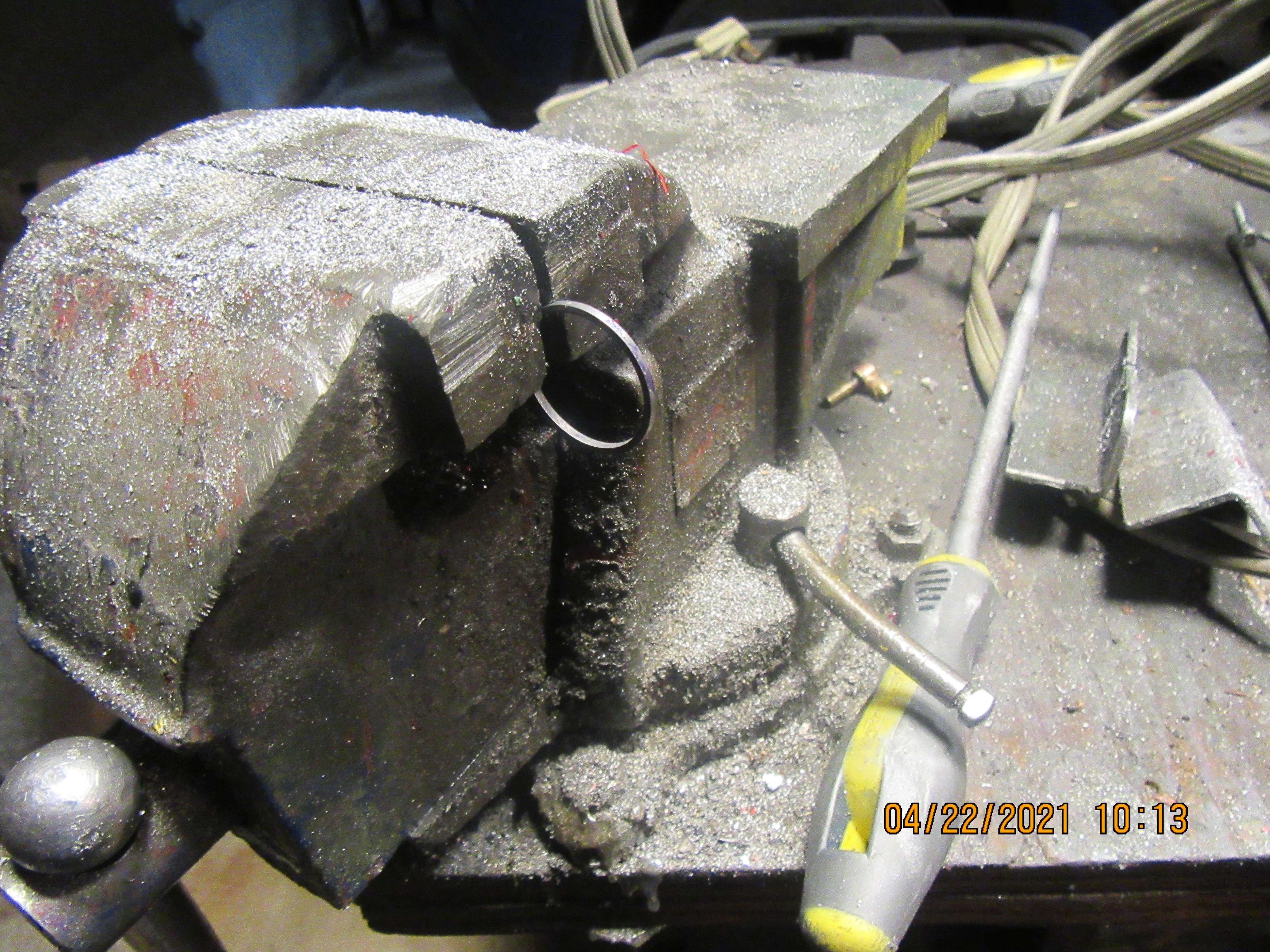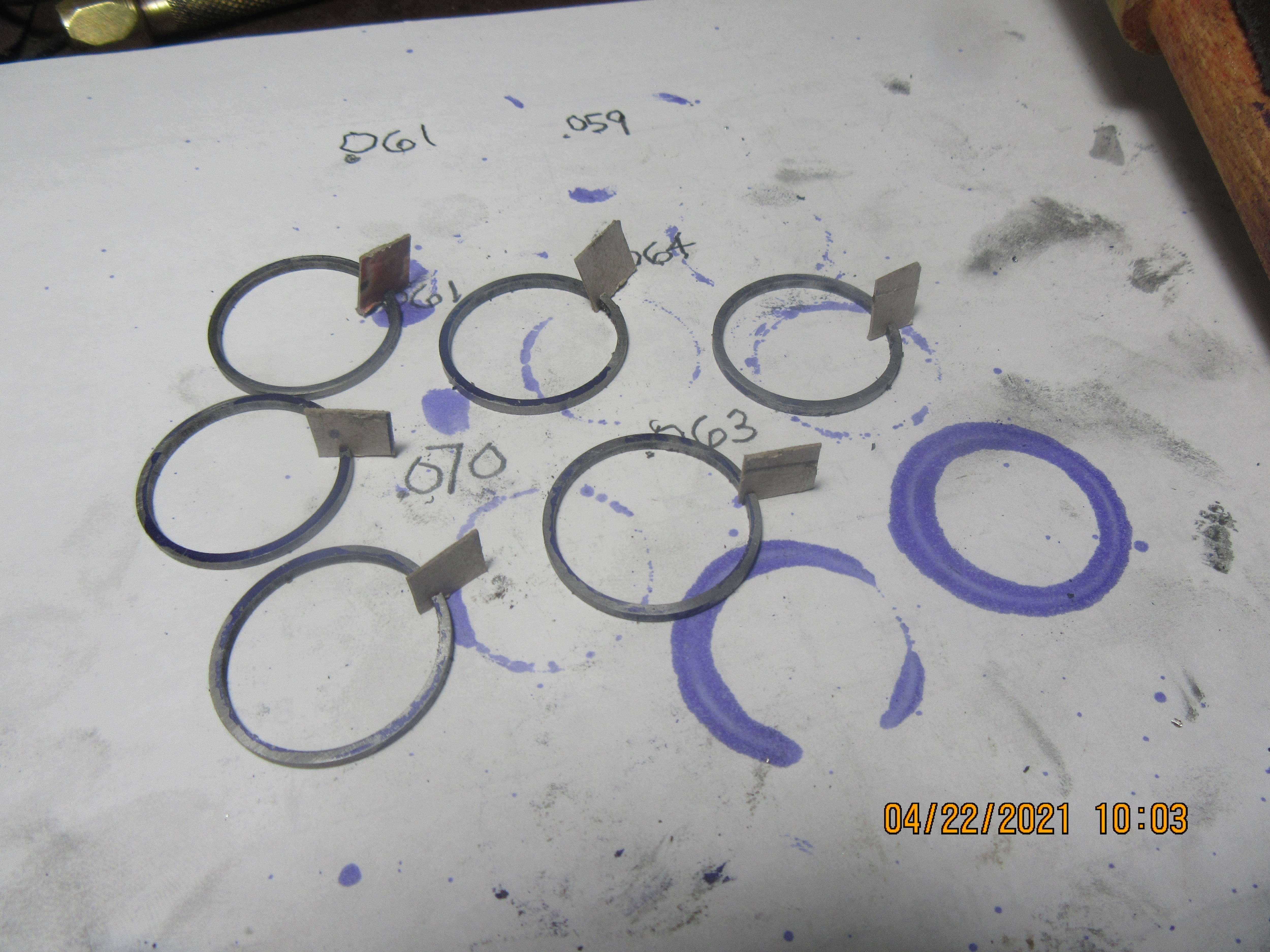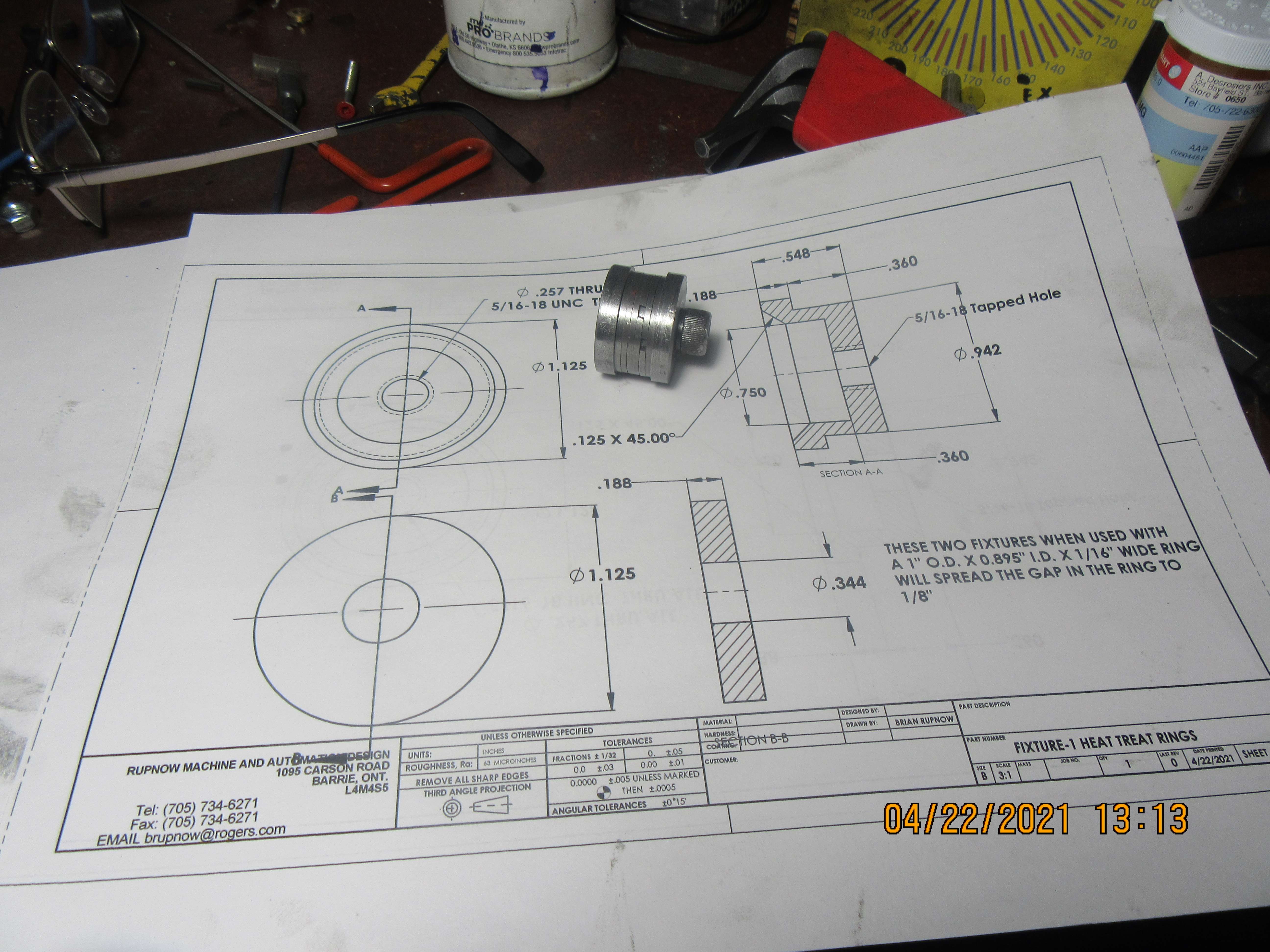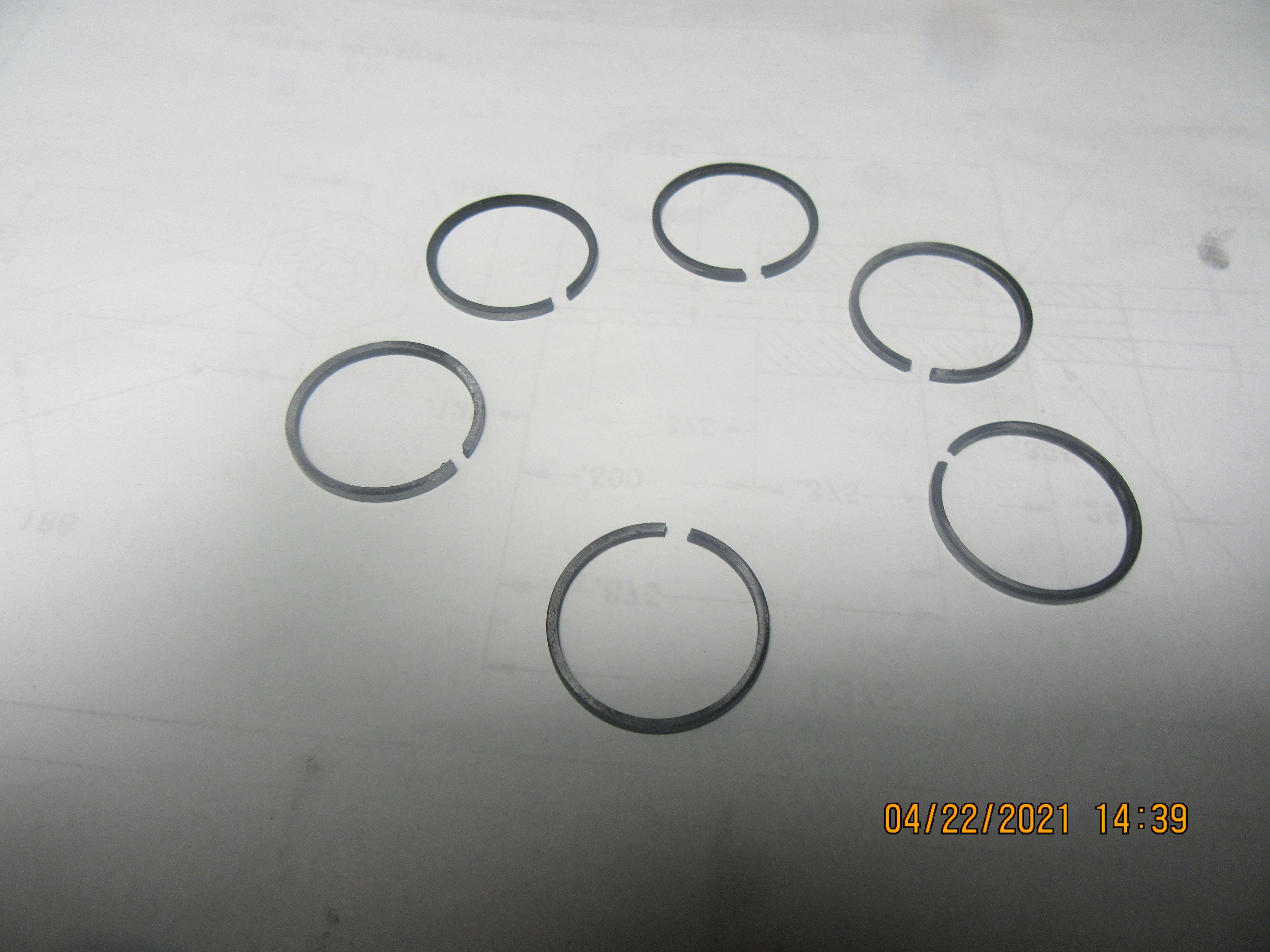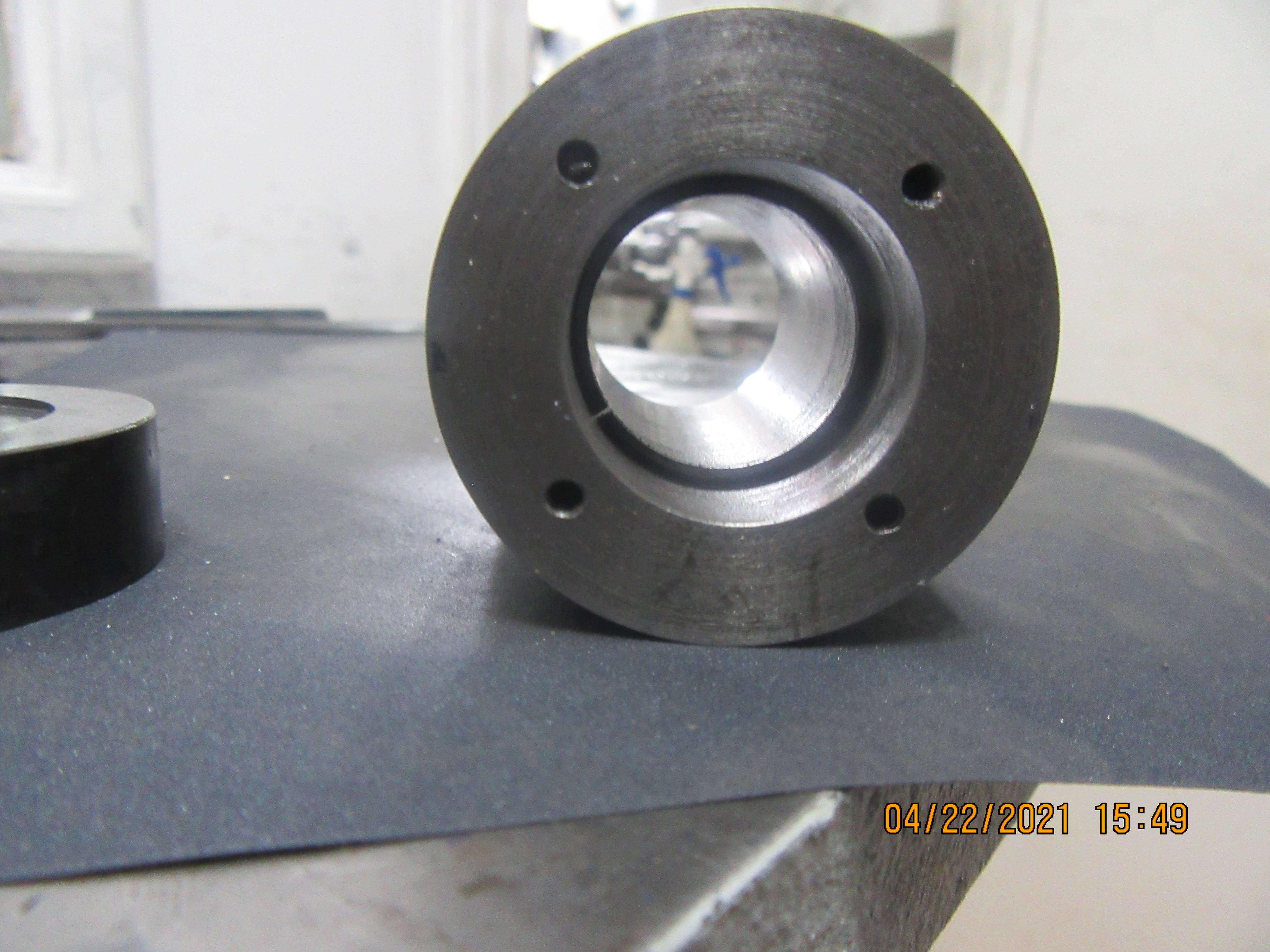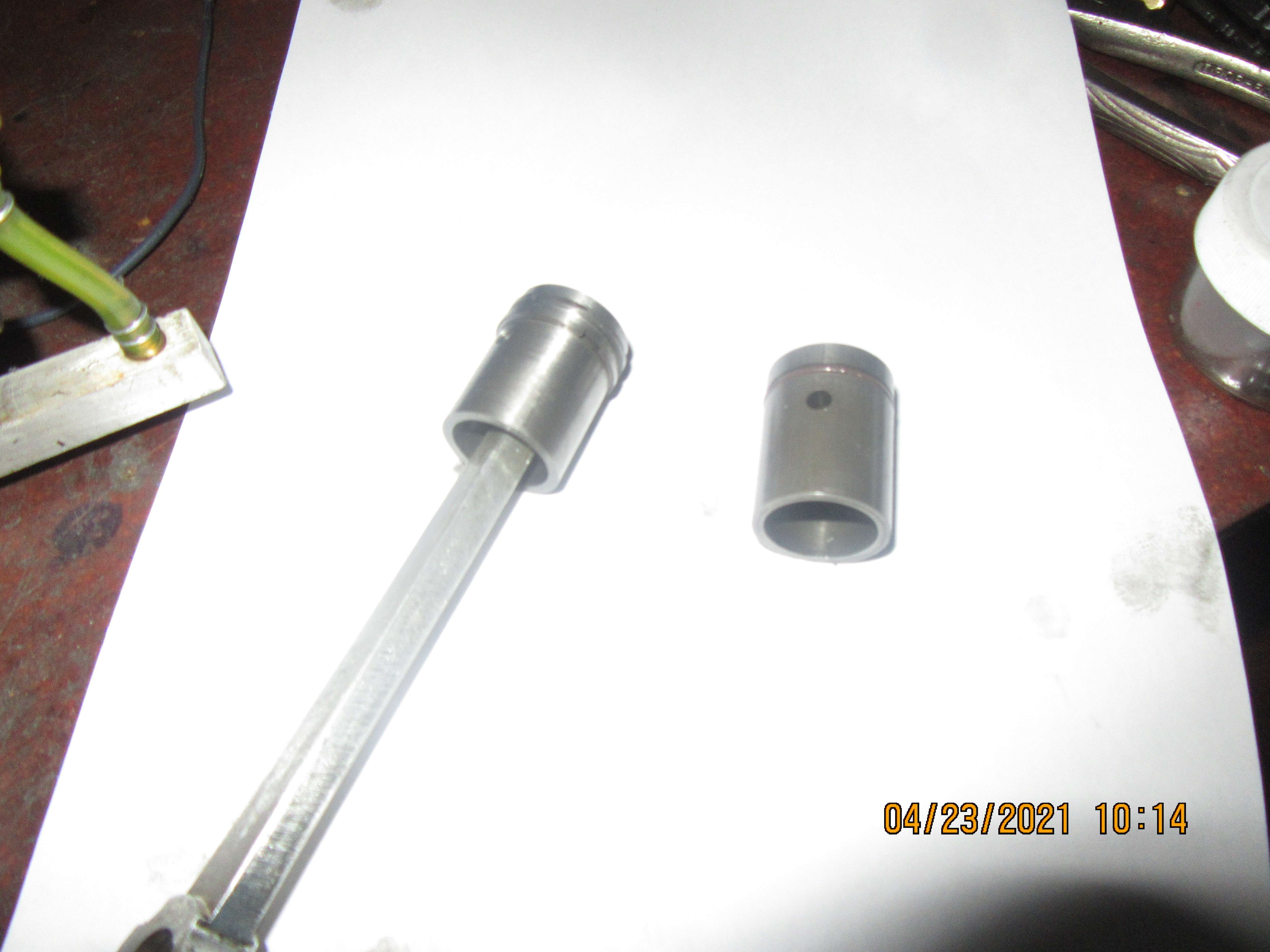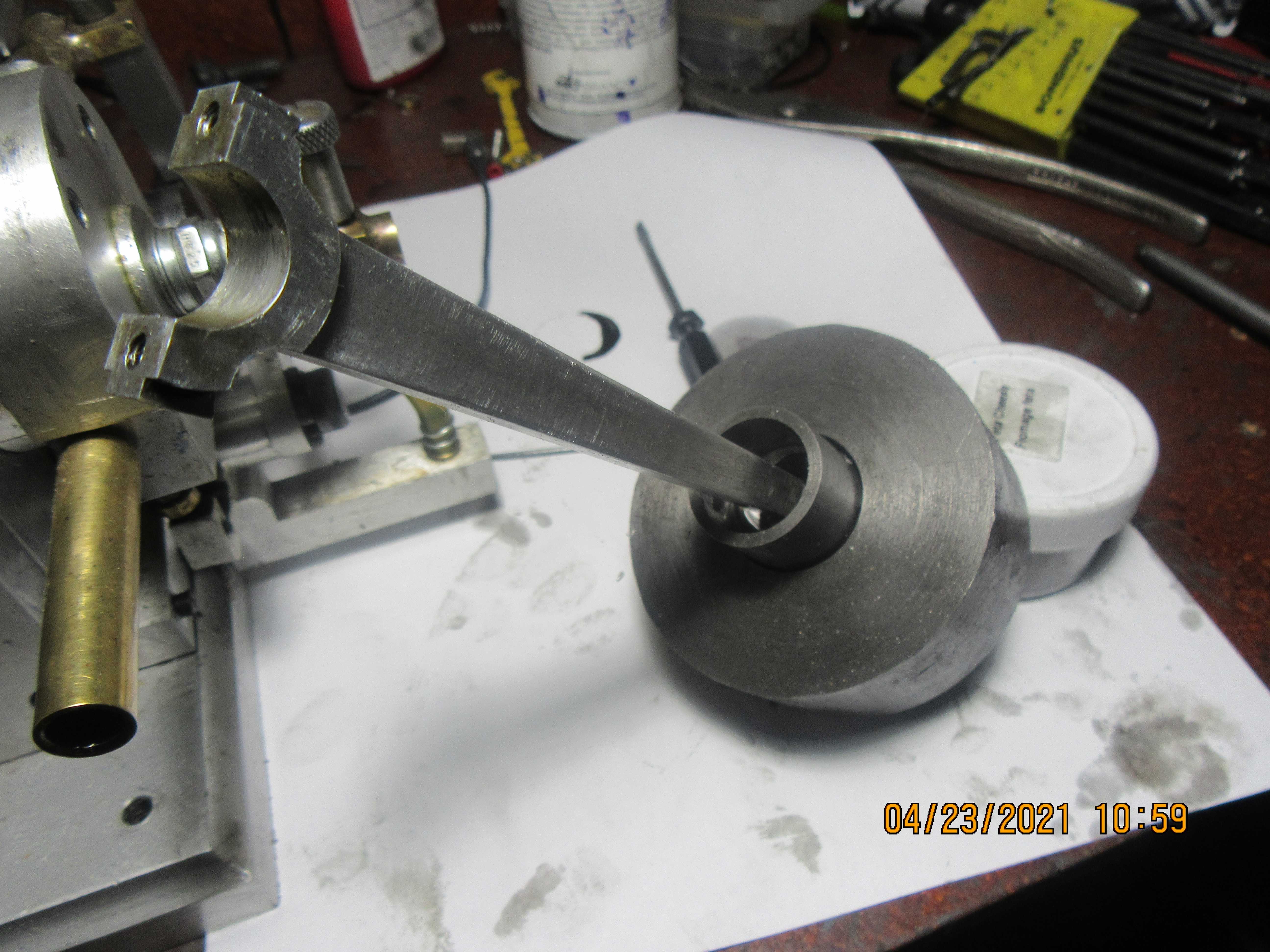- Joined
- Jan 17, 2009
- Messages
- 1,081
- Reaction score
- 278
I started making rings with the Chaddock method. A real pain, extra fixtures and much scaling.
Following the advise of an old fellow I met at Cabin Fever I tried his technique.
Next engine I machined the ring tube to a Diameter = Bore + OpenGap/pie
After slicing the ring I milled out the OpenGap + The Working Gap
My ring now has a "lenght" = Bore x Pie - Working Gap
It springs inside the bore to fit "just right".
If one goes to the excruciating math to calculate the shape of a gapped ring that becomes circular under under uniform radial pressure, he will find out the ring I made is all wrong.
After running 1/2 an hour inside the engine the ring show axial wear marks all around indicating all of its periphery touches the cylinder. Compression is good and the engine runs well.
Following the advise of an old fellow I met at Cabin Fever I tried his technique.
Next engine I machined the ring tube to a Diameter = Bore + OpenGap/pie
After slicing the ring I milled out the OpenGap + The Working Gap
My ring now has a "lenght" = Bore x Pie - Working Gap
It springs inside the bore to fit "just right".
If one goes to the excruciating math to calculate the shape of a gapped ring that becomes circular under under uniform radial pressure, he will find out the ring I made is all wrong.
After running 1/2 an hour inside the engine the ring show axial wear marks all around indicating all of its periphery touches the cylinder. Compression is good and the engine runs well.





